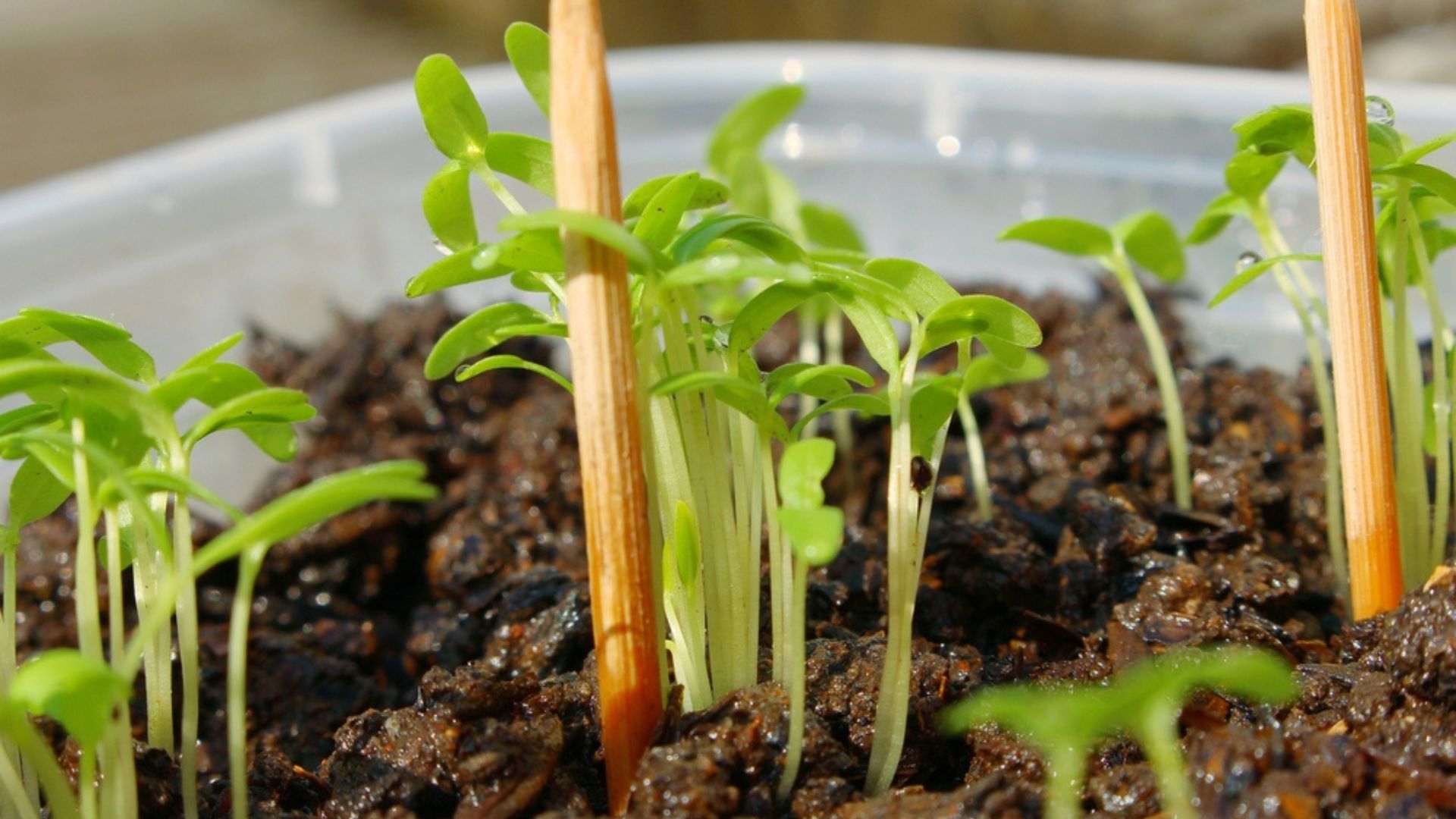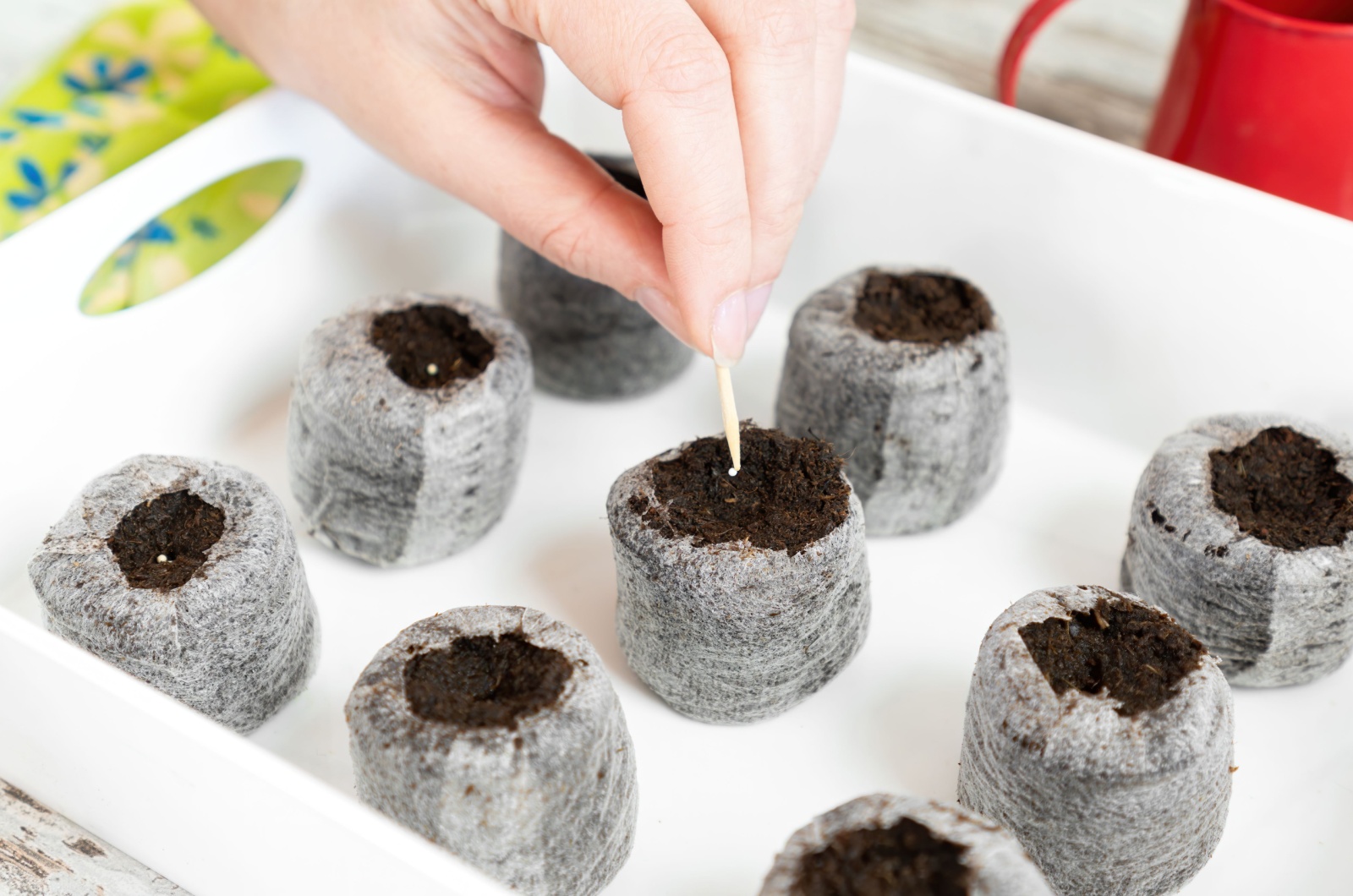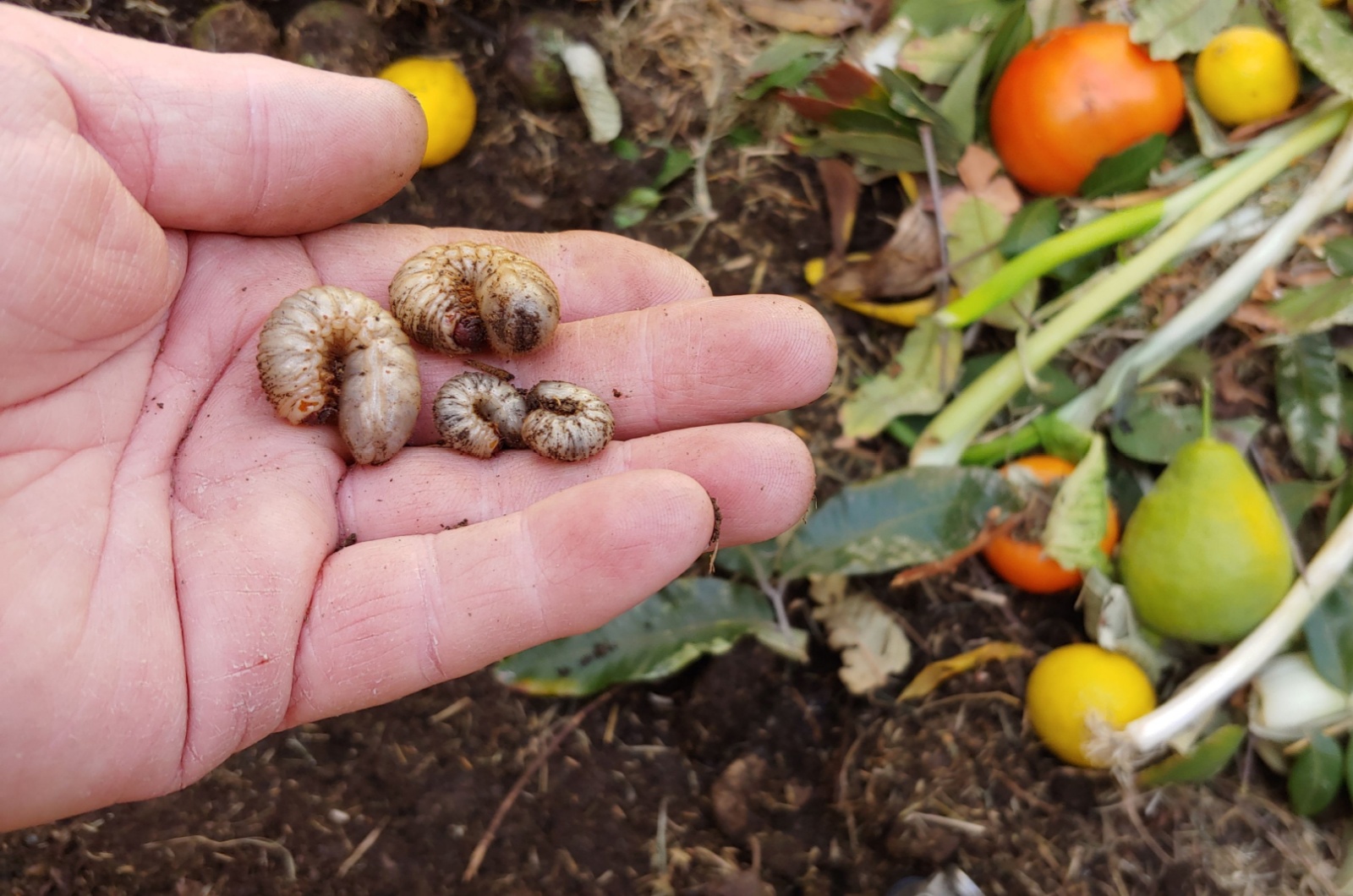I recently stumbled upon a neat little trick that has been a game-changer for me in the world of gardening. And it’s about those tiny seedlings that can sometimes be difficult to nurture and maintain.
You see, I’ve always had a soft spot for watching my plants grow from tiny seeds into flourishing greenery. But sometimes, keeping track of which seedling is which can be a bit tricky, right?
Well, not anymore! Just imagine this: by simply placing toothpicks next to your seedlings, you’re ensuring an invisible shield of protection for your delicate plants. It’s such a simple yet effective method that I just had to share it with you.
With toothpicks next to your seedlings, you’ll always be able to tell when these little plants are thirsty. Plus, they will protect your seedlings from pesky pests with their spiky ends!
You’ll Never Have To Worry If Your Plants Are Thirsty Or Dry
Have you ever wondered if your potted plants need watering but found it hard to tell? Well, forget about moisture level trackers and use toothpicks instead.
It turns out, toothpicks can help detect moisture in the soil!
Here’s how it works: When the soil is moist, the toothpick absorbs the water and becomes damp. You’ll notice soil sticking to it, giving you a clear sign that your plant has enough water.
But if the soil is dry, the toothpick stays dry too. It’s such a handy trick that I now use it all the time in my gardening routine!
You can use various things you have lying around to do this trick, like bamboo chopsticks or even a dry twig from your garden. Just avoid plastic toothpicks because they don’t absorb water like the others.
Toothpicks are handy because they’re inexpensive, easy to store, and you probably have some at home already.
Now all you have to do is poke the toothpick into the soil near your plant, making sure not to touch the stem or big roots. After a minute, take it out carefully and check. Is it wet? Are there soil crumbs on it?
If so, hold off on watering today and try again tomorrow. This way, you won’t accidentally give your plants too much water!
This might be useful: The Worst Time To Water Plants + The Best Way To Do It
You Will Also Say Goodbye To Pesky Pests Once And For All
As a kid, I used to place toothpicks in the soil to create a tiny fence. Looking back, I realize I was onto something!
The pointed ends of toothpicks can actually act as a protective barrier for your young seedlings, keeping pests at bay.
So, if you have enough time and toothpicks, you might want to try and test this theory: put some toothpicks next to each seedling to fend off bothersome cutworms.
These are common garden pests that often attack young tomato seedlings. They tend to lurk where your plant meets the soil, coiling around the stem as they prepare to feast on your delicate seedlings
By inserting a toothpick into the ground – either directly against the plant, a quarter-inch away and parallel to the stem, or one on each side of the plant, you get a barrier that prevents them from curling around the stem.
Thin and woody toothpicks actually fool the cutworm into thinking that they are young seedlings, but in fact, they’re just a fine piece of wood!
Now, you don’t have to necessarily use toothpicks if you don’t have any – a thick stick or a nail will work just fine!
Our Work Here Is Done
Okay, now that I’ve explained all the benefits of using toothpicks in the garden, we can conclude that they come in handy.
You might not realize it, but toothpicks have more uses than you’d expect. Just watch out so you don’t poke yourself!
I always suggest trying these natural ways to keep pests away instead of using chemicals that might hurt your plants.
And please, don’t forget to share some pics of your seedlings and toothpicks together! .
If you liked this article, then you might also like: 15 Ways To Use Eggshells Instead Of Throwing Them



